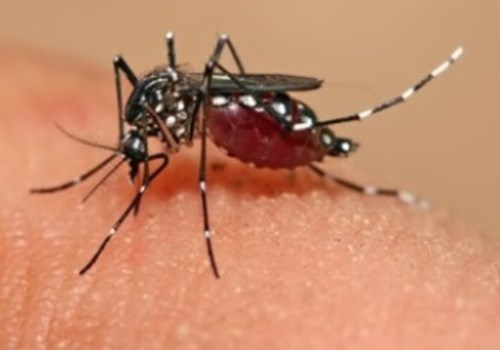Yellow Fever – a persisting pathogen

Yellow fever virus is an arbovirus of the Flaviviridae family, pathogenic to humans, and transmitted by mosquitoes (Aedes and Haemogogus species). Symptoms may be non-specific such as fever and headaches, but in some cases can be more severe including jaundice and haemorrhage; there is a high mortality rate of up to 50% for those who develop the more severe symptoms. Yellow fever is endemic in tropical areas of Africa and South America and although vaccination is available, take-up is low in some endemic areas. The virus has proved difficult to eradicate, partly because there are also non-human primate primary hosts, so transmission from other primates back to humans via mosquitoes reintroduces the virus into the human populations.
Strategies for prevention include: vaccination, mosquito control and enhanced outbreak preparedness and response. In 2006 the Yellow Fever Initiative was launched by WHO, UNICEF and national governments, aiming to guarantee a global supply of yellow fever vaccine and increase population immunity. Fourteen countries held vaccination campaigns between 2007 and 2016 resulting in the vaccination of over 105 million people.
However, in 2015/2016 a large outbreak occurred in Angola and the Democratic Republic of Congo. 7334 suspected cases were reported, 962 were confirmed and 393 deaths recorded. The WHO and partners supported the local response to control the outbreak and limit spread to surrounding countries but there was only a limited amount of vaccine stock available due to depletion resulting from the earlier far-reaching vaccination campaigns.
On 6 January 2017, the Brazil Ministry of Health (MoH) reported 12 suspected cases of yellow fever and Brazilian authorities have since confirmed 47 cases and 25 deaths. The MoH is investigating more than 160 other suspected cases and this outbreak has not yet been contained and the government has reportedly sent 2 million extra doses of vaccine against the disease to the area.
It is clear that the Yellow fever virus continues to evade control measures. NCPV provide a range of authenticated Flaviviridae for researchers tackling these important viruses.
Reference
Kraemer, Faria, Reiner, Golding, Nikolay, Stasse, Johansson, Salje, Faye, Wint, Niedrig, Shearer, Hill, Thompson, Bisanzio, Taveira, Nax, Pradelski, Nsoesie, Murphy, Bogoch, Khan, Brownstein, Tatem, De Oliveira, Smith, Sall, Pybus, Hay, and Cauchemez. "Spread of Yellow Fever Virus Outbreak in Angola and the Democratic Republic of the Congo 2015–16: A Modelling Study." The Lancet Infectious Diseases, 2016, The Lancet Infectious Diseases. http://www.thelancet.com/journals/laninf/article/PIIS1473-3099(16)30513-8/abstract
Links
Promed - the Program for Monitoring Emerging Diseases
